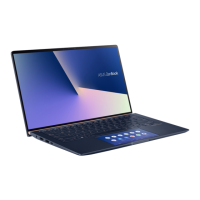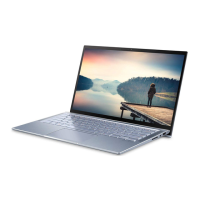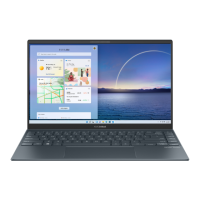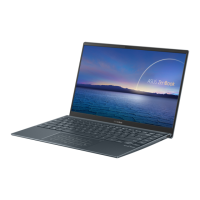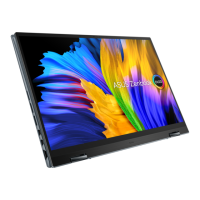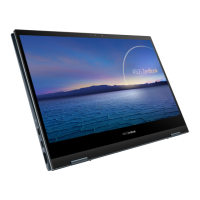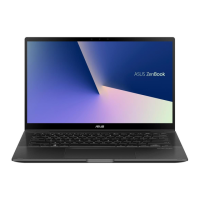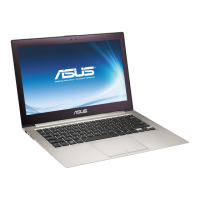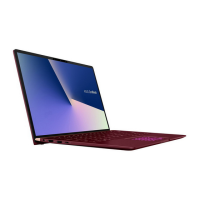
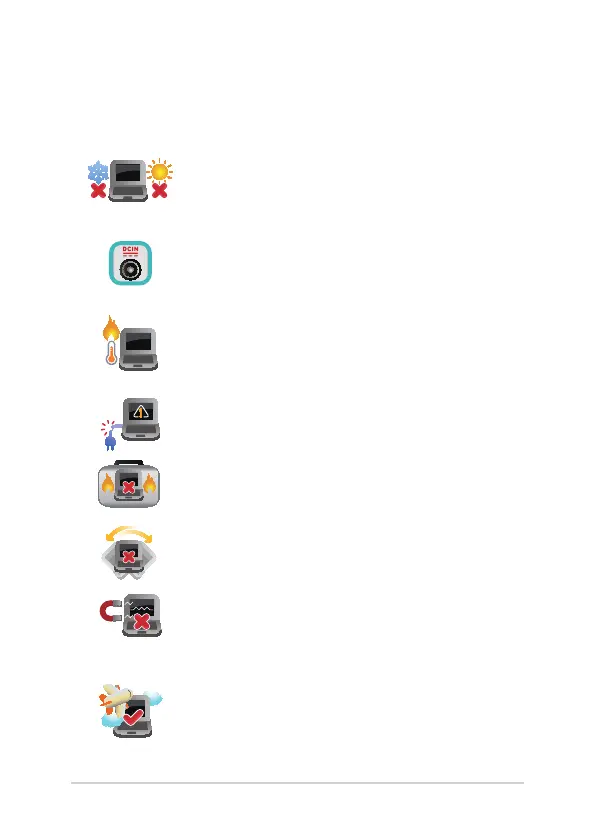 Loading...
Loading...
Do you have a question about the Asus ZenBook 12 and is the answer not in the manual?
Identifies and describes components located on the top surface of the notebook.
Details components, vents, and important notes for the bottom side of the notebook.
Explains the ports and status indicators on the right side of the notebook.
Explains the ports and status indicators on the left side of the notebook.
Guides on essential first steps, including charging the notebook before first use.
Covers various touchpad gestures for pointer movement, selection, and scrolling.
Explains keyboard layout, function keys, and special HotKeys for system control.
Details how to activate and use the numeric keypad for data entry.
Outlines the initial setup process for Windows 10 after powering on the notebook for the first time.
Guides on using the Windows 10 Start menu for launching applications and accessing settings.
Covers launching, customizing, and managing Windows applications on the notebook.
Explains how to switch between apps/desktops and snap windows side-by-side for multitasking.
Details how to use the Action Center and various keyboard shortcuts for efficient navigation.
Provides instructions for connecting to Wi-Fi and Bluetooth networks.
Covers procedures for turning off and putting the Notebook PC to sleep.
Explains the POST process, the role of BIOS, and when to modify default settings.
Provides steps for accessing BIOS, managing settings like Boot and Security, and navigating menus.
Guides on verifying the model, downloading, and updating the BIOS using EZ Flash 3 Utility.
Outlines how to restore or refresh the system using Windows 10 recovery features like "Keep my files".
Offers advice on updating Windows, using antivirus, backing up data, and general notebook care.
Provides solutions for common hardware issues like display problems or battery indicators.
Addresses software errors, slow boot times, and system responsiveness issues.
Details internal modem compliancy with international standards and network compatibility.
Declares networks with which the equipment is designed to work and potential inter-working issues.
Lists eligible non-voice equipment and exclusions based on quality regulations.
States the device's compliance with FCC rules regarding harmful interference.
Provides caution regarding RF exposure limits and user instructions for compliance.
Declares compliance with Innovation, Science and Economic Development Canada (ISED) standards.
Lists wireless operation channels for different domains and explains the purpose of device coating.
Includes safety precautions related to telecommunications equipment and lithium batteries.
Covers power cord requirements, hearing loss prevention, and REACH chemical substance compliance.
Notifies about copyright protection technology and warns about lithium-ion battery hazards.
Warns about the dangers of incorrect battery replacement and disposal procedures.
Details CTR 21 approval for notebooks with built-in modems, covering multiple languages.
Explains ENERGY STAR compliance and ASUS's adherence to global environmental regulations.
Provides information on recycling services and regional compliance notices for California and Singapore.
Covers notices for removable batteries, regional compliance for India, and EU Declaration of Conformity.
